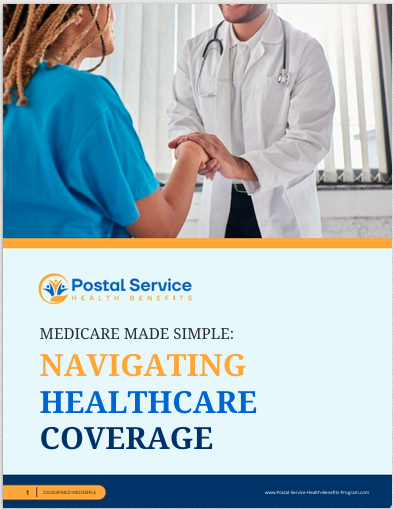Key Takeaways
-
The new $2,000 out-of-pocket cap in Medicare Part D means lower prescription costs for USPS retirees and employees, but it’s crucial to understand how the cost-sharing phases work.
-
Planning for medication expenses is now more predictable, but you should review your coverage options carefully to maximize benefits and avoid surprises.
A Major Shift in Medicare Part D Spending
If you’re a USPS retiree or employee enrolled in a Medicare Part D prescription drug plan, 2025 brings a significant change to how much you pay for medications. The new $2,000 out-of-pocket cap eliminates the unpredictable costs of past years, offering relief for those with high prescription drug expenses. But what does this mean for you, and how does it affect your coverage?
Understanding the new structure can help you make informed decisions about managing your healthcare costs. Here’s everything you need to know to prepare for these changes and make the most of your Medicare benefits.
Breaking Down the Cost Phases in 2025
Medicare Part D now has three distinct cost phases, each affecting how much you pay:
1. Deductible Phase
-
You pay 100% of your drug costs until you reach your plan’s deductible.
-
The maximum deductible for 2025 is $590.
-
This phase resets annually, so be sure to budget for it at the start of each year.
2. Initial Coverage Phase
-
After meeting your deductible, you pay a percentage of drug costs (typically 25%) while your plan covers the rest.
-
This phase lasts until total drug spending (including what you and your plan pay) reaches $5,030.
-
If you take multiple medications, your costs can add up quickly in this phase.
3. Catastrophic Coverage Phase (Now Capped at $2,000)
-
Once your out-of-pocket spending hits $2,000, your plan covers 100% of covered drug costs for the rest of the year.
-
This removes the previously unlimited costs under catastrophic coverage, which was a major financial burden for retirees with high medication needs.
How This Change Benefits USPS Retirees and Employees
This new cap is particularly beneficial for USPS retirees and employees, many of whom rely on Medicare Part D for essential medications. Here’s why:
-
Predictable Costs: No more worrying about hitting an open-ended catastrophic coverage phase.
-
Lower Overall Expenses: Once you reach the $2,000 cap, you won’t have to pay any more out-of-pocket for covered prescriptions.
-
Better Budgeting: You can plan for medication expenses with greater accuracy.
-
Improved Access to Essential Medications: You won’t have to skip doses or delay refills due to high costs.
-
Reduced Financial Stress: Retirees on fixed incomes will find it easier to manage their healthcare budgets.
What You Should Watch Out For
While the cap is a big win, there are still some important considerations:
-
Not All Drugs Are Covered Equally: Some medications may not be included in your plan’s formulary, meaning you might still face high costs.
-
Plan Changes May Affect Coverage: Medicare Part D plans adjust formularies, copays, and premiums annually, so reviewing your plan during the Medicare Open Enrollment Period (October-December) is essential.
-
The Deductible Still Applies: You’ll need to pay up to $590 before reaching the initial coverage phase.
-
Pharmacy Networks Can Change: Your preferred pharmacy may no longer be in-network, which could increase your costs.
-
Prior Authorization Requirements: Some medications may require additional approvals before coverage kicks in.
How to Maximize Your Savings Under the New Cap
If you want to get the most out of this change, consider these strategies:
Compare Plans During Open Enrollment
-
USPS retirees should carefully review Part D plan options every year.
-
Look for plans that offer the best coverage for your prescriptions at the lowest cost.
-
Make sure your preferred pharmacy remains in-network.
Use Generic Medications When Possible
-
Many generic alternatives are just as effective as brand-name drugs but come with significantly lower costs.
-
Ask your doctor if a lower-cost alternative is available.
Take Advantage of Medicare’s Prescription Payment Plan
-
Starting in 2025, you can spread your prescription costs throughout the year rather than paying large amounts upfront.
-
This option may be helpful if you take multiple medications.
-
Check with your Medicare plan to see if this feature is automatically included or if you need to enroll.
Work With a Licensed Agent
-
A professional can help you understand how the cap interacts with your overall Medicare benefits and Postal Service Health Benefits (PSHB) coverage.
-
They can also advise you on additional options to reduce prescription drug costs.
Will You Still Need Extra Coverage?
With the new cap in place, some USPS retirees may wonder whether additional prescription drug coverage is necessary. Here are a few factors to consider:
-
If You Rarely Reach $2,000 in Out-of-Pocket Costs: A basic Part D plan may be enough.
-
If You Take Expensive Medications: Additional coverage or cost-sharing options might still be useful.
-
If You Want Broader Coverage: Some USPS retirees may choose plans that offer more robust prescription benefits.
-
If You Expect Your Medication Needs to Increase: Planning ahead can help you avoid unexpected costs.
Open Enrollment: When to Reevaluate Your Plan
The Medicare Open Enrollment Period from October to December is the best time to review your Part D plan:
-
Check if your prescriptions are still covered.
-
Compare costs with other plans.
-
Ensure your pharmacy is still in-network.
-
See if any new cost-saving programs are available.
-
Evaluate whether your current plan still meets your needs.
Ignoring this opportunity could mean missing out on potential savings.
What About PSHB and Medicare Part D?
Starting in 2025, USPS retirees and employees transitioning to Postal Service Health Benefits (PSHB) will automatically receive Medicare Part D prescription drug coverage through an Employer Group Waiver Plan (EGWP). Here’s what that means for you:
-
Better Coordination: The integration of PSHB and Medicare Part D should reduce overall prescription costs.
-
Lower Out-of-Pocket Spending: Many PSHB plans offer additional benefits beyond the standard Medicare Part D coverage.
-
Automatic Enrollment: If you’re eligible, you’ll be automatically enrolled, ensuring continuous drug coverage.
-
Additional Cost-Saving Features: Some plans offer mail-order pharmacy benefits, which can further reduce costs.
How Will This Affect Your Annual Healthcare Budget?
With a $2,000 out-of-pocket cap, USPS retirees and employees can estimate their yearly prescription drug expenses more accurately. Here’s how you can budget effectively:
-
Factor in the Deductible ($590 Maximum)
-
Plan for the Initial Coverage Phase Costs
-
Once You Reach the $2,000 Cap, Your Costs Drop to $0 for Covered Drugs
-
Track Medication Prices Throughout the Year
By knowing these numbers, you can better allocate your retirement income or employee benefits for healthcare expenses.
Final Thoughts: What This Means for You
The new $2,000 out-of-pocket cap for Medicare Part D in 2025 is a game changer for USPS retirees and employees. It offers predictability, reduces financial stress, and ensures you won’t face unlimited drug costs. However, you still need to make smart choices about your coverage to get the most out of this benefit. Be proactive about reviewing your plan options, and if you have any doubts, get in touch with a licensed agent listed on this website for professional advice tailored to your needs.






